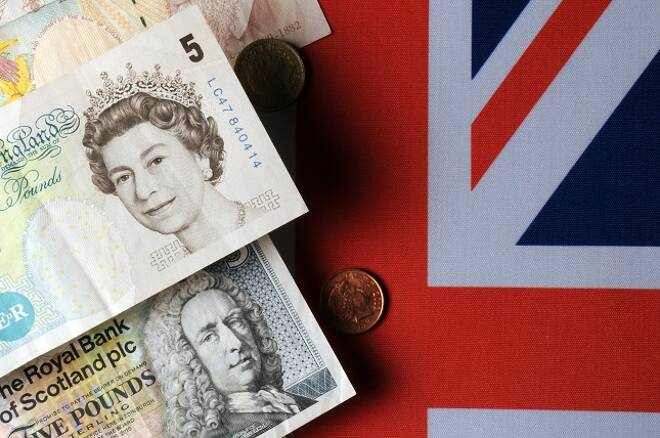Advertisement
Advertisement
The Economic Calendar Puts the EUR and Pound in Focus. Risk Aversion Weighs Early, However
By:
While the economic calendar puts the EUR and Pound in focus, sentiment towards the economic outlook and COVID-19 numbers will remain the key driver.
Earlier in the Day:
It was a quiet start to the day on the economic calendar this morning, with no material stats to provide direction. While there were no stats to consider, the Aussie Dollar was in action early on, with the RBA Policy Meeting Minutes in focus.
Updates from the EU and the U.S on COVID-19 numbers and plans to ease lockdown measures were mixed, limiting support for riskier assets.
At the start of the week, the number of new coronavirus cases increased by 73,685 to 2,481,026. This was a slowdown from Sunday when the total number of new cases had risen by 82,610.
Across France, Germany, Italy, and Spain, the total number of new cases rose by 7,604, which was down from 13,496 on Sunday. A downward trend was not reported from the U.S, however. New cases increased by 28,494 on Monday, following 27,475 new cases on Sunday.
The Key take away from the numbers was the decline across the 4 EU member states supporting the easing in lockdown measures.
While the COVID-19 numbers from the EU were positive, numbers from the U.S were less so. The Monday historic slump in crude oil prices added further pressure on riskier assets early on.
For the Aussie Dollar
The RBA monetary policy meeting minutes from 4th April’s meeting provided direction early on. Salient points from the April minutes included:
- Members noted that the coordinated monetary and fiscal response would soften the expected economic contraction.
- Together with measures taken by ADIs and other businesses, this should also support the economy’s recovery once the health crisis has passed.
- The Bank would continue to do what was necessary to achieve the 3-year yield target. The target remains in place until progress is made towards its goals for full employment and inflation.
- Members noted that, if conditions continue to improve, it was likely that smaller and less frequent purchases of government bonds would be needed.
- The Board confirmed that it would not increase the cash rate before removing the yield target.
The Aussie Dollar moved from $0.63267 to $0.63185 upon release of the minutes. At the time of writing, the Aussie Dollar was down by 0.66% to $0.6294.
Elsewhere
At the time of writing, the Japanese Yen was up by 0.06% to ¥107.55 against the U.S Dollar, while the Kiwi Dollar was down by 0.80% to $0.5989.
The Day Ahead:
For the EUR
Its a relatively quiet day ahead on the economic calendar. April’s ZEW Economic Sentiment figures for Germany and the Eurozone will be in focus this afternoon.
While there will be some degree of interest in the numbers, the current economic climate is unlikely to support any pickup in sentiment towards the economy. The EU remains in a broader lockdown, with economic data and IMF forecasts continuing to paint a grim picture.
Outside of the numbers, expect any chatter from member states on easing lockdown plans and fiscal policy to also influence.
At the time of writing, the EUR was down by 0.26% to $1.0834.
For the Pound
It’s a busy day ahead on the economic calendar. UK employment numbers are due out later this morning.
While the markets have shown little interest in February numbers, any rise in the unemployment rate in February would be an early red flag.
Claimant count numbers for March may also fail to reflect the effects of lockdown measures and COVID-19, which would limit any upside for the Pound.
Outside of the numbers, Members of Parliament return in social distancing fashion, with COVID-19 numbers also in focus.
As things stand, the continued rise in new cases suggests that the UK may need to extend the lockdown, which is Pound negative.
At the time of writing, the Pound was down by 0.27% to $1.2409.
Across the Pond
It’s a relatively quiet day ahead on the U.S economic calendar. Economic data is limited to new home sales figures for March.
In the U.S, purchase mortgage applications had been on the rise until the latter part of the month, suggesting a further rise in new home sales.
A slide in new purchase applications in late March and through April, however, points to a marked decline in new sales. The surge in the unemployment rate and the lockdown has hit the real estate market in April. As a result, any positive numbers will likely have a muted impact on the Dollar.
The Dollar Spot Index was up by 0.26% to 100.215 at the time of writing.
For the Loonie
It’s a relatively busy day on the economic calendar, with February’s retail sales figures due out later today.
Positive numbers are unlikely to have a material impact on the Loonie, however, with April numbers likely to reflect a marked decline.
Market risk sentiment and crude oil prices will continue to provide direction on the day.
The Loonie was down by 0.04% to C$1.4154 against the U.S Dollar, at the time of writing.
About the Author
Bob Masonauthor
With over 28 years of experience in the financial industry, Bob has worked with various global rating agencies and multinational banks. Currently he is covering currencies, commodities, alternative asset classes and global equities, focusing mostly on European and Asian markets.
Advertisement
